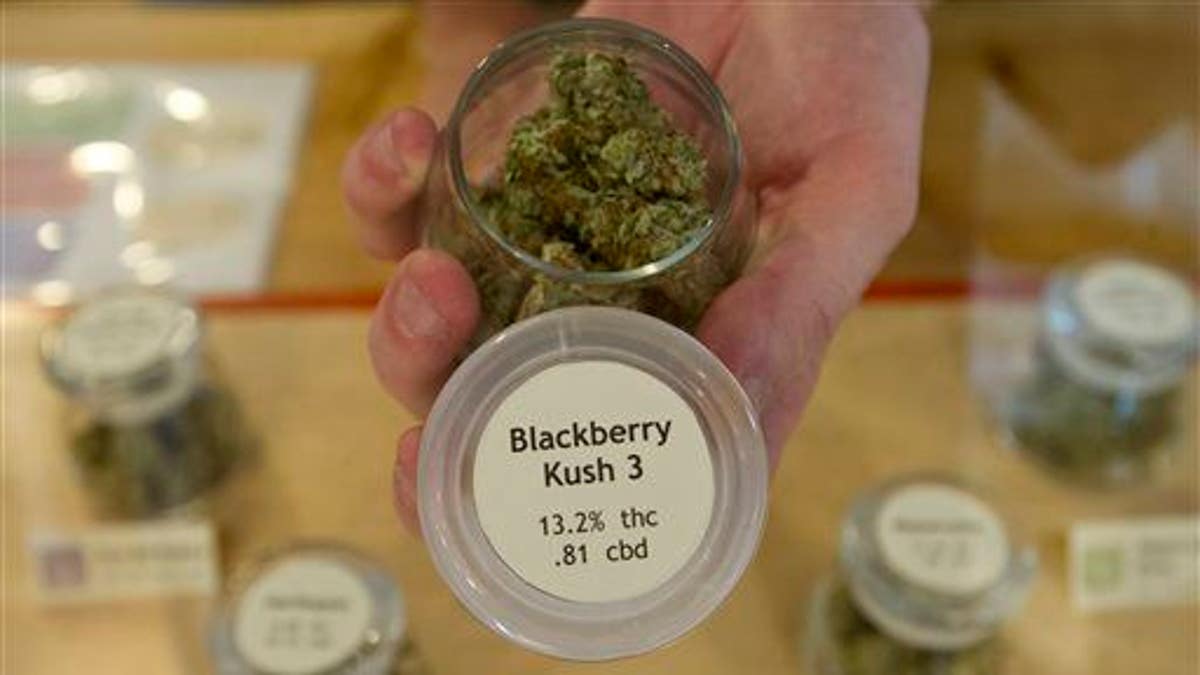
In this photo taken on July 2, 2014, an employee at Bloom Well, a medical marijuana dispensary in Bend, Ore., holds a container of cannabis that is marked with the THC and CBD results. (AP Photo/The Bulletin, Ryan Brennecke)
Synthesized versions of tetrahydrocannabinol—that's THC, the active ingredient in marijuana—already exist in pill form and are used to treat nausea, vomiting, and appetite loss that often follows cancer treatments or appears in patients with AIDS.
But a new process out of Germany could offer a less expensive, easier way to create this cannabis component from scratch, with nary a marijuana leaf in sight: genetically engineering it from yeast, the New York Times reports.
Biochemists at the Technical University of Dortmund say in a paper published in the Biotechnology Letters journal that by using the yeast, a consistent supply of THC for medicinal purposes could be generated without growing pot.
"This is something that could literally change the lives of millions of people," the CEO of a company that produces yeasts for THC and cannabidiol—another compound used for medicinal purposes—tells the Times.
Japanese experimenters were among the first to eke out one of the necessary THC enzymes from yeast nearly a decade ago, and since then, less expensive and quicker DNA technology has helped scientists across the board find the rest of the genes needed to make THC.
Right now only a small amount of THC can be generated from the yeasts, though scientists are working on boosting that production with some finagling of the gene-engineering process.
And yeast does have one big competitor when it comes to producing THC: marijuana itself, with some varieties containing an ample 30% THC content by dry weight, the Times notes.
"Right now, we have a plant [that's] essentially the Ferrari of the plant world when it comes to producing the chemical of interest," a professor who helped out with earlier gene-sequencing efforts tells the paper.
"Cannabis is hard to beat." (Hemp isn't pot, by the way—and there's just one gene that separates them.)
This article originally appeared on Newser: Scientists Make Pot Chemical Out of ... Yeast?
More From Newser
